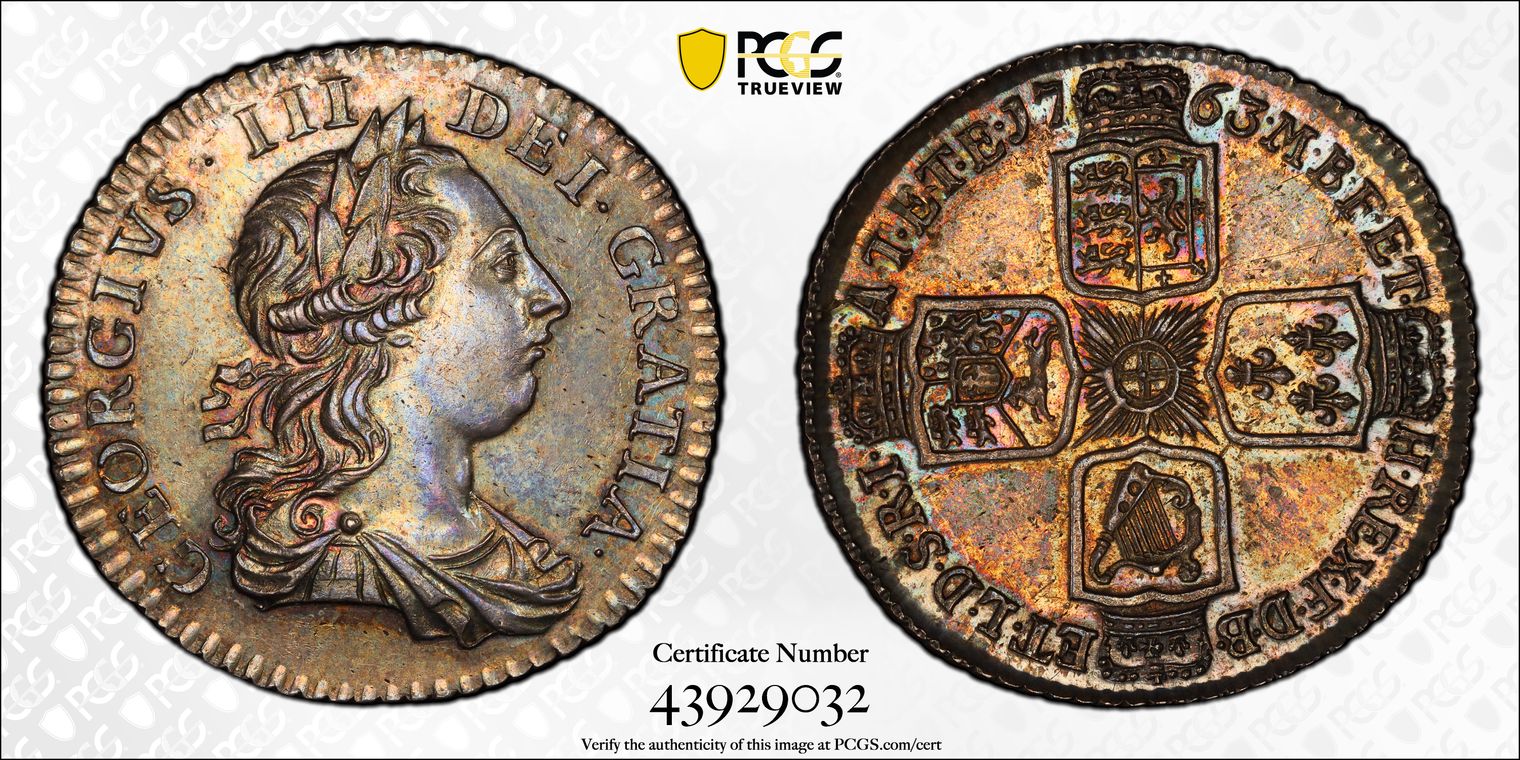Newp, 1763 Northumberland Shilling! Is it an Irish Shilling?
 Clio
Posts: 612 ✭✭✭✭✭
Clio
Posts: 612 ✭✭✭✭✭

Just got true views of this beauty in after a successful crossover. NGC MS63 to PCGS MS63+
This is an interesting piece many auction house will claim it's extremely scarce and while it seems to be a low mintage the modern interpretation of it is that prior figures were somewhat misleading.
"The Northumberland Shilling is so called because the Earl of Northumberland as the new Lord Lieutenant of Dublin in 1763 distributed £100 worth of these new coins, some two thousand pieces whilst parading on the streets of Dublin in Ireland. An old ticket accompanies this piece written in the hand of one of the earlier generations of the Baldwin family (early 20th Century) mentioning the £100 worth given out, and falsely giving the impression that £100 worth was the sum total issued, when in fact the calendar year of 1763 represented an output of 2,629 pounds in weight of silver for coinage. The coinage of 1763 consisted of maundy denominations and shillings only, and probably means that circa 100,000 shillings plus would have been issued which is still a very small figure as annual mintage goes. "
Referenced from a Spink auction.
Still a very interesting piece and some have proposed it represents an Irish issue as its purpose seemed to be for use specifically in Ireland. I collect Irish and English shillings so it ticks both boxes and was on my list for quite awhile before I found a suitable example.
https://numismaticmuse.com/ My Web Gallery
The best collecting goals lie right on the border between the possible and the impossible. - Andy Lustig, "MrEureka"
Comments
I like It congratulations 😊
I give away money. I collect money.
I don’t love money . I do love the Lord God.
Looks like it was worth the wait.
That is as nice as I have seen. As a caveat, there were quite a few fakes put out there a few years ago.
I too always doubted the 2,000 mintage number as it just appeared too frequently.
Well, just Love coins, period.
Well, if the above theory is true that the true mintage is closer to 100,000 than the 2,000 issued personally by Northumberland, then the answer mut be "no", becuse "most" of the 1763 shillings would have been issued somewhere other than Ireland.
You could theoretically only classify them as "Irish" if the Northumberland myth was true and all of the 1763 coins were issued in Ireland.
Even still, coin collectors do not traditionally separate out and assign countries to coins based purely on the location of issue. 1951 pennies are still considered "British pennies", even though the entire 1951 mintage was shipped off to Bermuda; they are not considered or called "Bermuda pennies". They are "British pennies", of the "homeland type", that just happen to have only been issued in Bermuda. Even those odd denominations not originally intended for circulation in Britain, such as the threehalfpence, are still classified as "British", rather than from wherever colony the coins were actually intended and issued for circulation.
I'll admit the logic is not applied consistently, especially when one looks at the mintmarked gold sovereigns and halves issued by the branch mints out in the colonies; most British collectors regard colonial sovereigns as "British", while a minority do not; most collectors outside Britain regard them as "colonial" and assign them to their mint-of-origin country. And British coin collectors seem peculiarly uninterested in claiming the "British trade dollar" (1895-1935) as "British", because they were struck to a non-Sterling standard in India for use in Hong Kong and elsewhere in Asia, and never became legal tender in Britain itself.
Roman emperor Marcus Aurelius, "Meditations"
Apparently I have been awarded the DPOTD twice.
This was more or less my thoughts on it as well. I do just happen to collect Irish shillings so I enjoyed the attention this piece got as an "Irish Shilling" even if in reality it's far from it.
https://numismaticmuse.com/ My Web Gallery
The best collecting goals lie right on the border between the possible and the impossible. - Andy Lustig, "MrEureka"
Doesn't seem a heck of lot different than the 1749 and 1754 farthings, a large amount of which were shipped to the colonies.
Very nice piece!
PS - ditto what @7Jaguars says about the fakes of these. Some are quite well executed, especially when viewed on their own (bordering on "superfake") - but you can discern differences when comparing to the real thing here.